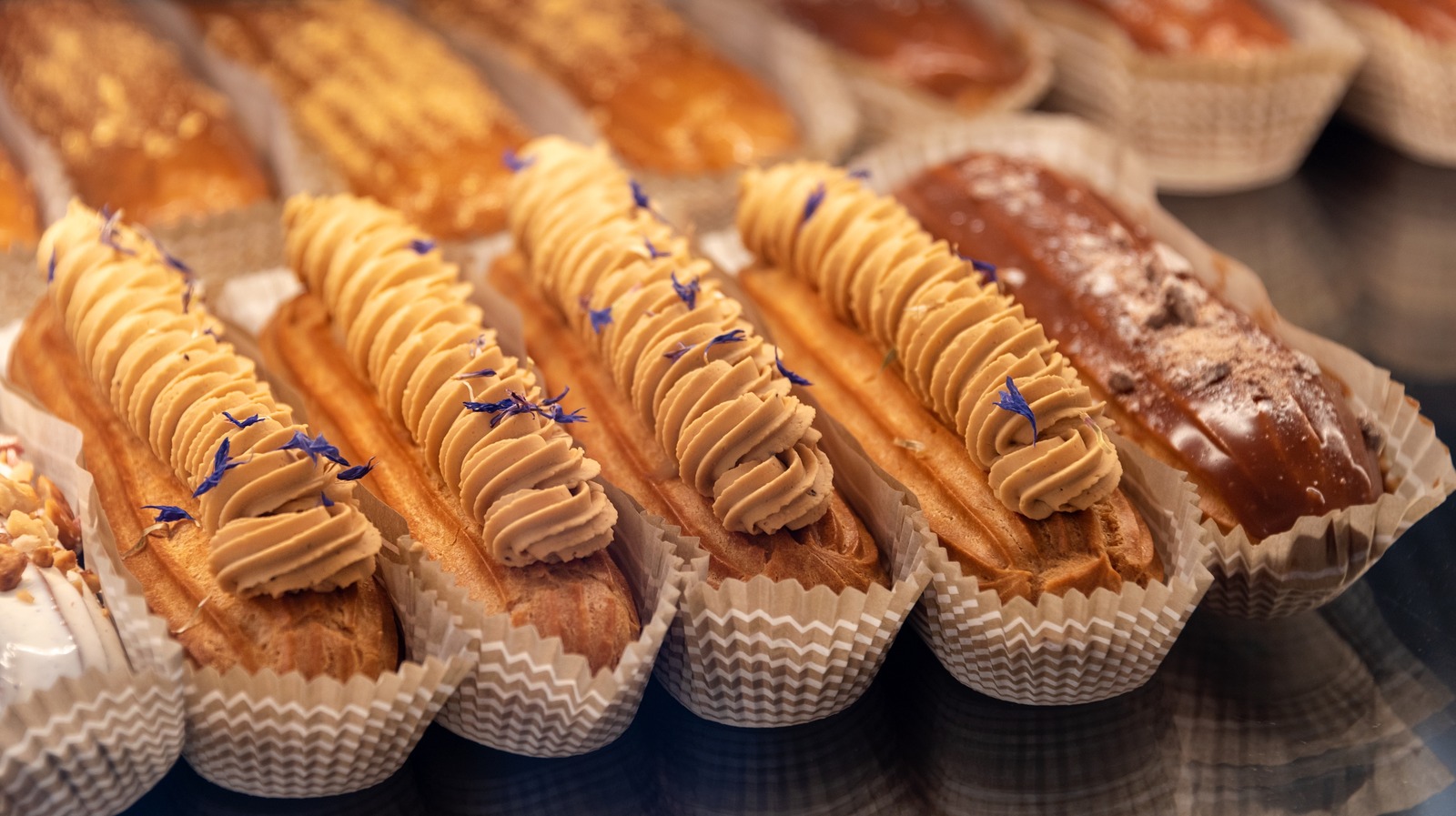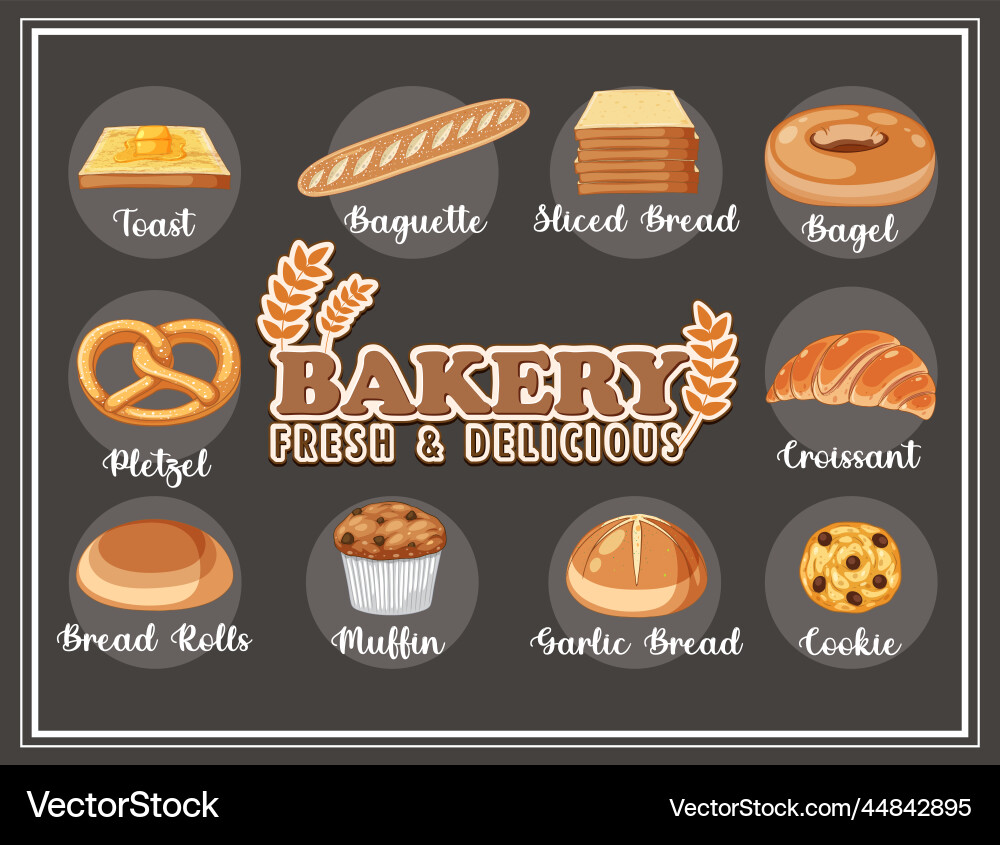Cafe Shop-- Unwind with a Hot Coffee and a Cozy Ambiance
Cafe Shop-- Unwind with a Hot Coffee and a Cozy Ambiance
Blog Article
From Sourdough to Croissants: Kinds of Breads and Pastries You Have To Attempt
Checking out the diverse world of bread and breads discloses an intricate tapestry of tastes and structures, each with its own distinct story. From the tangy complexity of sourdough, soaked in practice and all-natural fermentation, to the fine-tuned flakiness of croissants, embodying French culinary mastery, there is much to uncover. Think about the renowned baguette, with its crisp exterior and ventilated crumb, or the buttery splendor of brioche. Even the intricate layers of Danish breads, usually full of luscious custards or fruits, supply a fascinating comparison. What makes each of these developments truly unique? The response exists simply in advance.
Sourdough Bread
Sourdough bread, renowned for its distinct appetizing taste and chewy structure, is an ageless classic that has actually been valued for centuries. Coming from as a staple in old civilizations, this artisanal bread owes its one-of-a-kind qualities to the all-natural fermentation process including wild yeast and lactic acid microorganisms. The absence of industrial yeast permits a slower fermentation, which enhances the depth of taste and causes a more absorbable loaf.
The conventional technique of making sourdough starts with a starter, a mixture of flour and water that catches wild yeast from the setting. This starter is carefully preserved and fed regularly to keep the yeast and germs energetic. When presented to dough, the starter initiates fermentation, producing bubbles of carbon dioxide that offer the bread its ventilated framework. The extended fermentation period not just enhances the appearance yet also breaks down gluten and phytic acid, making sourdough a lot more nourishing and less complicated on the digestive system.
Artisans globally take satisfaction in their unique sourdough recipes, each reflecting neighborhood active ingredients and problems - Lofology Bakery And Cafe. Whether taken pleasure in plain, toasted, or as a structure for exquisite sandwiches, sourdough bread remains an enduring sign of cooking workmanship and practice

Baguettes
Though typically connected with the cooking practices of France, baguettes have actually ended up being a precious staple in bakeshops around the globe. Identifiable by their elongated shape and crisp, golden-brown crust, baguettes are frequently considered the epitome of simple, yet splendid, bread-making (Cafe Shop). The origins of the baguette in its contemporary form can be traced back to the early 20th century, when advancements in baking modern technology enabled for the creation of this distinctive loaf
At its core, a typical baguette consists of just four active ingredients: flour, water, yeast, and salt. The mastery lies in the strategy. The dough undertakes a precise process of working, proofing, and baking, which causes its particular structure-- a slim, crackly crust covering a soft, airy inside. This juxtaposition of appearances is a specifying attribute that adds to the baguette's widespread honor.
Baguettes are functional and can be enjoyed in numerous ways. Whether cut and served with butter, coupled with cheeses and charcuterie, or utilized as the foundation for a sandwich, the baguette provides a fascinating consuming experience. This simple loaf showcases the appeal of simpleness, making it a long-lasting fave among bread enthusiasts globally.
Croissants
Renowned for their buttery, half-cracked layers, croissants stand as an essential sign of French bread craftsmanship. Originating from Austria however developed in France, croissants are a staple in patisseries and bakeries worldwide (Lofology Bakery And Cafe). Their manufacturing involves a careful procedure called lamination, wherein dough is folded with butter several times to develop slim layers that expand wonderfully when baked
The secret to an excellent croissant hinges on the quality of components and the precision of method. High-fat European butter, abundant in taste, is crucial for achieving the desired flakiness and golden shade. The dough needs to be managed naturally to keep the honesty of the layers, ensuring an airy, light interior. The end product ought to boast a crisp exterior and a tender, slightly chewy inside, releasing a rich, buttery aroma upon splitting.
Croissants can be taken pleasure in ordinary or loaded with a selection of components such as almond paste, chocolate, or ham and cheese, offering versatility to suit various tastes. Whether relished as a morning indulgence or a mid-day reward, croissants represent the creativity of French baking, making them a must-try for any kind of cooking lover.
Brioche
Brioche's rich background and extravagant structure make it a standout in the world of bread and breads. Originating from France, this sweet, buttery bread go back to at least the 15th century and has given that ended up being a symbol of extravagance and culinary skill. Its name, stemmed from the my latest blog post Old French term "brier," implying to knead, highlights the relevance of method in its preparation.
The trick to brioche's unique character depends on its enriched dough, which is filled with eggs and butter, leading to a tender crumb and a gold, flaky crust. This high-fat content not only enhances its taste but likewise contributes to its soft, pillowy structure. Brioche's adaptability is another factor for its widespread recognition. It can be delighted in plain, toasted with a touch of jam, or used as the base for more intricate developments such as brioche à tête, burger buns, or even bread dessert (Cafe Shop).
Regardless of its seemingly easy active ingredients, the art of crafting a perfect brioche needs accuracy and perseverance. The dough undergoes a careful procedure of kneading, resting, and proofing, making sure that each loaf attains its particular lightness and richness. This commitment to top quality and practice cements brioche's status as a timeless classic in the pastry shop arsenal.

Danish Breads

Danish pastries are celebrated for their versatility. They can be loaded with a selection of components, ranging from pleasant to mouthwatering. Traditional fillings consist of custard, fruit protects, and almond paste. The addition of garnishes like nuts, topping, or fresh fruit frequently enhances their aesthetic charm and flavor profile.
The process of making Danish breads needs precision. The dough must be maintained at an optimal temperature level to make certain the butter layers stay distinct, and the folding strategy calls for a mindful hand to achieve the best balance of flakiness and inflammation.
In the context of global bread offerings, Danish breads stand out not only for their careful workmanship however also for their capacity to offer a fascinating ruptured of flavors and textures in every bite (Lofology Bakery And Cafe). A real testament to the art of baking, they continue to be a beloved option among pastry fanatics
Final Thought
The exploration of varied bread and bread kinds, from the zesty deepness of sourdough to the buttery flakiness of croissants, reveals an abundant tapestry of cooking practices. The crisp crust and ventilated interior of baguettes, the lavish richness of brioche, and the intricate layers of Danish pastries loaded with custard or fruit highlight the virtuosity included in cooking. Each selection supplies an unique sensory experience, highlighting the value of these baked goods in global culinary culture.
Report this page